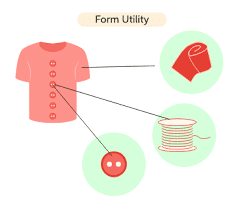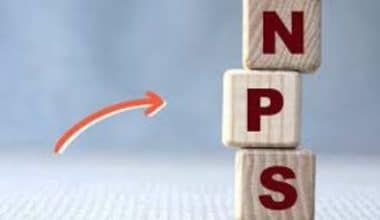The transformation of raw materials into finished products is known as form utility. Companies that sell goods that generate utility typically don’t just sell components. They assemble and process these components. Such as chemicals, or elements to create products. Which are specifically designed to fulfill a particular need. Find out more about form utility, definition, example, characteristics, and form utility marketing in this article. So, keep reading!
Form Utility
The process of transforming raw materials into finished products is referred to as form utility. Businesses that market goods with form utility typically do not sell individual components. Rather, they assemble and process certain components, chemicals, or elements to create products. Which are directly produced to satisfy a particular need. In this particular concept, the form that the commodity takes determines its value to the customer. However, numerous factors influence the form utility of a commodity. Meanwhile, how goods are packaged and presented to consumers is important. Perhaps, a well-designed show may act as a form of utility itself.
For instance, beverages sold in small-size presentations are ideal for customers who are sometimes thirsty. It is not compared to beverages sold in large-size presentations, which are better suited to family gatherings or community meetings. Meanwhile, other characteristics of products, such as comfort, technological requirements, height, weight. As well as color, or shape, may be altered to improve their form utility.
>> Read Also: Business Strategy: Levels of Business Strategy+10 Best Business Strategy Examples
Note: for any business to function well, you will need a business plan and good strategies.
Form Utility Definition
Form utility definition is an economic term that refers to the benefits consumers derive from goods that are designed in the most convenient manner possible for them. It is the belief that a product or service is more attractive to the customer if its presentation and modeling correspond to his or her real needs.
Businesses devote time and resources to product analysis to precisely ascertain which goods or services customers need. Following that, company executives strategize about the product’s growth to meet or exceed certain needs to build from utility.
However, offering consumers greater form utility can take the form of lower prices, increased convenience, or a broader range of products to increase the value of the goods.
>> Learn More: BUSINESS ACQUISITIONS and MERGERS
Example Of Form Utility
Take this as a form utility example. Mug Designers Co. is a company that specializes in the design of coffee mugs for commercial and residential use. The company is currently developing a new product line. And the Product Development Team is interested in maximizing the form utility of the company’s products. Meanwhile, they gathered information about the most important elements that customers found useful. And, attractive in a coffee mug by consulting previous market research studies by consultants. They determined that color, form, and size were critical.
This information enabled the team to set specific goals for the product line’s breadth. They created five different color palettes for each mug, along with three different sizes and ten different shapes. With the aim to increase the product line’s form utility, the team calculated that 150 unique mugs should be designed.
Form Utility Marketing
The utility marketing model is comprised of four components. Which include time, place, possession, and form. The form utility marketing model takes into account how buyers feel about a product. As well as the ease with which the product can be purchased and obtained when they want it.
>> Learn: DIVESTITURE: What does Divestiture Mean in Business
Time Utility
Assuring that a product is available when a consumer requests it adheres to the principle of time utility. Consumer demand varies according to the weather, the holiday season, and daily wants and needs. For example, demand for warm coats increases throughout the winter, and demand for Christmas, Halloween, and Easter decorations increases as the holidays approach, while demand for soda and other soft drink items may remain constant throughout the year due to the fact that consumers may consume them at any time.
>> Read Also: Strategic Goals: Setting Goals For any Business(+ Detailed Guide).
Place Utility
Place utility is the value consumers place on the location of their purchases. However, stores make it easier for consumers to purchase items. Perhaps, consumers find what they need in a location that is convenient to their home or place of employment.
Possession Utility
Possession utility refers to the importance or value consumers place on buying a commodity and having the right to use it in an expected manner or to discover new uses for it. For instance, although many people use flower pots for planting. You can also use these containers to store small items found around the house. As well as serve as a centerpiece for the dining room table.
>> Discover: How to Write a Business Plan [with Sample Pdf]
Form Utility
This is the perceived value placed on a finished product by a customer. Consumers buy products such as chairs, appliances, or cars in part because they are incapable of locating and assembling all of the product’s components. The consumer places emphasis on the finished product or the shape produced by the product’s component parts.
Characteristics Of Form Utility
The following are the characteristics of form utility;
#1. Usefulness
Something that has utility does not necessarily imply that it is also useful. If a good satisfies a need, it has utility. However, the consumption of that good maybe ‘useful’ or ‘harmful’. For example, wine consumption is useful to a man who is accustomed to drinking. Perhaps, because it satisfies his desire to drink. However, while wine consumption is detrimental to health, it serves a function. Thus, characteristics of form utility are not synonymous with usefulness.
>> You May Read: MARKETING CONCEPT FOR SMALL BUSINESS
#2. Satisfaction
Utility refers to a commodity’s ability or capacity to satisfy human desires, whereas satisfaction is the result of utility. For example, apples lying in a fruit vendor’s shop are useful to us. But we gain satisfaction from them only when we purchase and consume them. This means that utility exists prior to the consumption of a commodity and satisfaction occurs only after consumption. However, the cause is utility, and the effect or result is satisfaction.
#3. Pleasure
It is not important for a utility that processes commodities to provide satisfaction when we consume them. The utility is painless and pleasurable. An injection is beneficial to a patient because it can alleviate his or her symptoms. However, the injection does not provide him with pleasure; rather, it provides him with some discomfort. Quinine has a bitter taste, but it is effective in treating malaria. As a result, there is no link between utility and pleasure.
>> Read Also: INNOVATION STRATEGY IN BUSINESS WITH DETAILED EXAMPLE
#4. Subjective
The utility is a psychological and subjective term. This implies that the utility of a product varies according to person. Opium is extremely useful to someone who is accustomed to opium but it is useless to someone who is not accustomed to opium. Similarly, the utility of various commodities varies according to person. As a result, utility is a subjective concept.
#5. Relative
The utility is an ephemeral term. A commodity can have varying degrees of utility at various points in time, in different locations, or for different individuals. Historically, a Tonga was more useful. However, since the advent of the bus, its importance has diminished. A raincoat is more useful in hilly areas than in plain areas during the rainy season. A fan has more utility in the summer than it is in the winter.
>> Discover: Growth Strategy: 5 Proven Frameworks for any Business with Examples
#6. Abstract
The utility is a service or something abstract that cannot be seen, touched by the human hand, or felt with the naked eye. For instance, an advocate’s argumentative strength is abstract. Similarly, utility is a concept that is abstract.
>> Read More: Top Ten Online Businesses That Pays (+ 45 home business ideas)
What Is an Example of Form Utility in Business?
Customers benefit from products that are completely ready for purchase. A consumer, for example, could buy all of the pieces needed to create their own computer and spend time putting them together themselves.
What Are the 5 Types of Utility?
They include form utility, task utility, time utility, place utility, and possession utility.
What does utility mean in business?
In business, utility refers to the complete satisfaction gained from consuming a commodity or service. Consumer utility maximization is commonly assumed in economic theories based on rational choice.
What Is Form Utility Class 11?
Utility class 11 is realized when it is used to produce an item that fulfills a need. Ready-to-consume goods are the end result, and this process is helpful since it reduces the time between production and consumption. Wood, for instance, is used for many furniture components.
What Is Form or Transformation Utility?
Transformation utility is an economic term that highlights the value consumers derive from things that are created in the most convenient manner for them. It is the belief that a product or service is more useful to the consumer if it is presented and modeled in a way that corresponds with his actual requirements.
What Is Form Task Utility?
Form task utility is achieved when a company modifies the shape or form of a product to make it more helpful or satisfactory for customers.
What Is Marginal Utility Class 11?
The marginal utility of a commodity is the increased utility acquired by consuming an additional unit. If the 10th unit provides 100 utils of satisfaction and the 11th unit provides 105 utils of satisfaction, then the marginal utility of the 11th unit is 5 utils.
Conclusion
The term “form utility definition” refers to the degree to which a product or service satisfies a customer’s needs. For instance, a business may design a product to meet the needs or desires of a particular client. Form utility, for example, is the integration of consumer requirements and desires into the functionality and benefits of the company’s products. Hopefully, you have understood form utility, definition, example, marketing, and characteristics.
Related Articles
- MARGINAL UTILITY: Formula and Calculations
- Chain Of Title: A Comprehensive Guide, Updated!!!
- Easement in Gross: Definition and Practical Example for any Business
- WHAT IS NSF FEE? Overview and Comprehensive Guide
- Business Utilities: Cost and Comparison of Utilities for Business in UK
- Generator Transfer Switch Kit: Components, Features, Advantages(Opens in a new browser tab)Chain Of Title: A Comprehensive Guide, Updated!!!(Opens in a new browser tab)
- EASEMENT: Everything You Should Know(Opens in a new browser tab)






